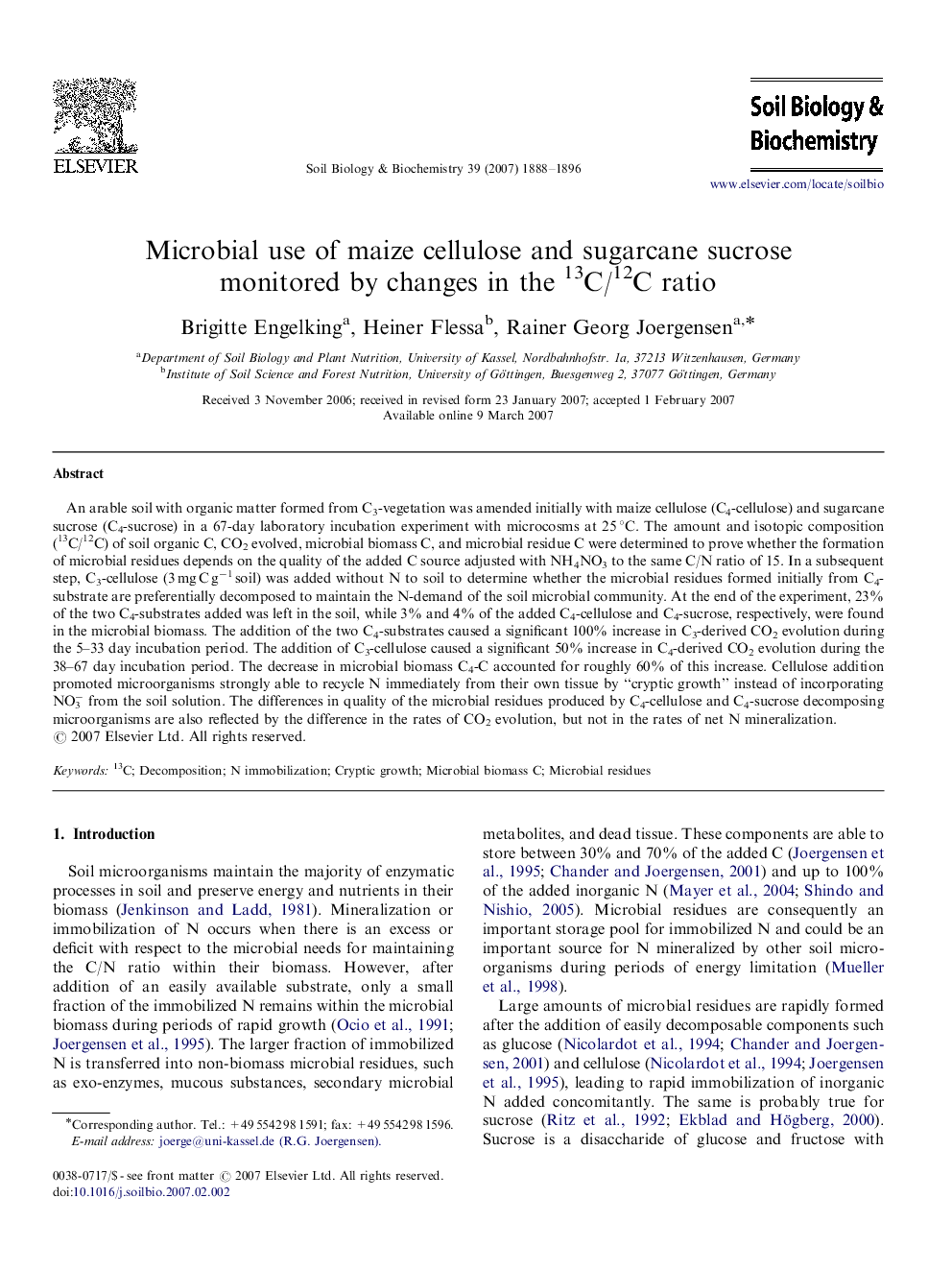| Article ID | Journal | Published Year | Pages | File Type |
|---|---|---|---|---|
| 2026054 | Soil Biology and Biochemistry | 2007 | 9 Pages |
An arable soil with organic matter formed from C3-vegetation was amended initially with maize cellulose (C4-cellulose) and sugarcane sucrose (C4-sucrose) in a 67-day laboratory incubation experiment with microcosms at 25 °C. The amount and isotopic composition (13C/12C) of soil organic C, CO2 evolved, microbial biomass C, and microbial residue C were determined to prove whether the formation of microbial residues depends on the quality of the added C source adjusted with NH4NO3 to the same C/N ratio of 15. In a subsequent step, C3-cellulose (3 mg C g−1 soil) was added without N to soil to determine whether the microbial residues formed initially from C4-substrate are preferentially decomposed to maintain the N-demand of the soil microbial community. At the end of the experiment, 23% of the two C4-substrates added was left in the soil, while 3% and 4% of the added C4-cellulose and C4-sucrose, respectively, were found in the microbial biomass. The addition of the two C4-substrates caused a significant 100% increase in C3-derived CO2 evolution during the 5–33 day incubation period. The addition of C3-cellulose caused a significant 50% increase in C4-derived CO2 evolution during the 38–67 day incubation period. The decrease in microbial biomass C4-C accounted for roughly 60% of this increase. Cellulose addition promoted microorganisms strongly able to recycle N immediately from their own tissue by “cryptic growth” instead of incorporating NO3− from the soil solution. The differences in quality of the microbial residues produced by C4-cellulose and C4-sucrose decomposing microorganisms are also reflected by the difference in the rates of CO2 evolution, but not in the rates of net N mineralization.
